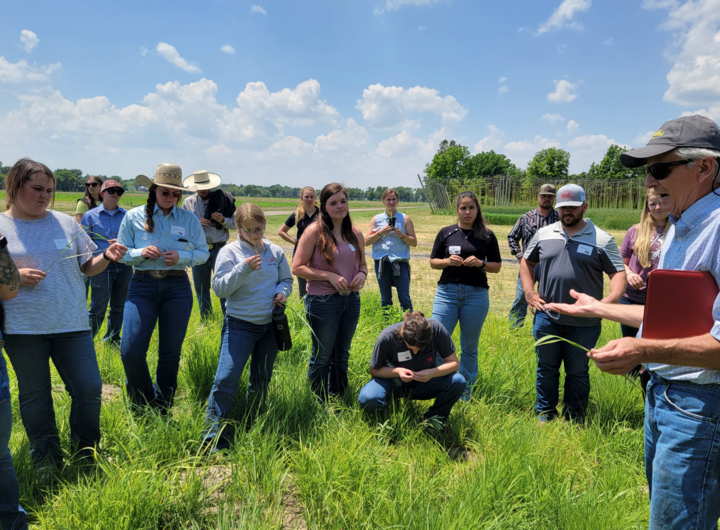The time for turn out to our primary summer pastures is very near. A couple of important questions are what date to turn out, and which pastures should be first?
The driving factors on the amount of grass growth at a specific date varies each year depending on spring temperatures and precipitation. This spring, March and April temperatures have been above normal and there are some areas in eastern Nebraska that have some level of drought. For areas that had drought last year or are dry this year, delaying turn out is recommended, if possible. This will allow the grass plants to maximize growth, given the current soil moisture conditions, and result in greater season-long production.
Initial grass growth in the spring comes from energy reserves stored in the roots and crowns of the grass plant. Determining if a plant is ready to graze is as simple as counting leaves. The number of collared leaves that wrap all the way around the plant stem like a shirt collar indicates whether the plant is ready to be grazed. The rule of thumb is three collared leaves for cool season grasses and four collared leaves for warm season grasses. When grasses reach these minimums, enough photosynthesis occurs to sustain growth and allow storage of nutrients which can be used to recover from grazing. Not waiting for the minimum number of leaves stresses the plant at a critical time and may reduce total annual production potential.
If grazing before pastures are ready is unavoidable, the negative impacts can be spread lightly across multiple pastures by only grazing each pasture for a few days before moving. The key is to not stay too long and only lightly grazing the fresh growth. Grazing will stress the vulnerable plants. However, impacts can be limited if the plant is not grazed repeatedly and sufficient recovery time is allowed before being grazed again.
When grazing multiple native grass pastures in a rotation, it is beneficial to change the sequence or order of grazing for the set of pastures. This change in the time of grazing each year benefits the overall health and vigor of the grasses. For producers that have both native range and introduced grass pasture such as smooth bromegrass or crested wheatgrass, grazing the introduced grass pastures first is a great approach to use that resource and allows for a later turn-out on the native pastures.

